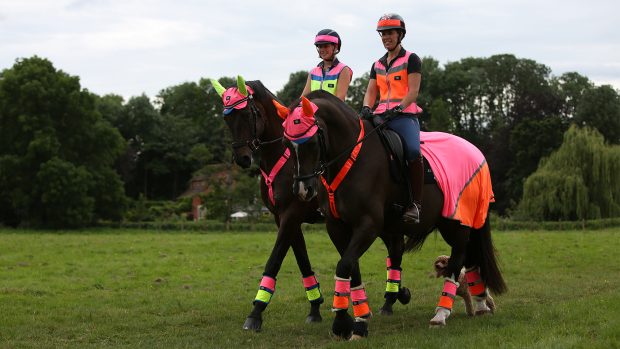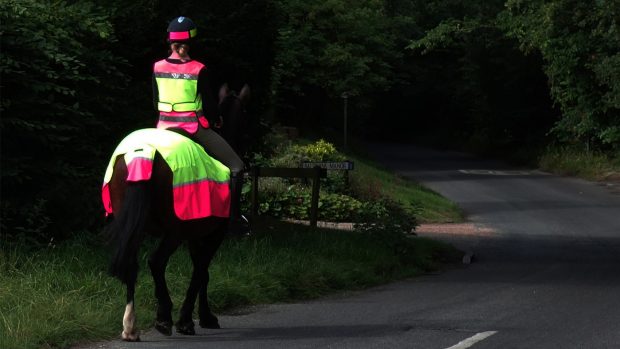If riders want to prevent accidents arising from low-flying aircraft, they must understand how invisible they are in the countryside, say pilots.
For Group Captain Dom Toriati, there is one thing riders could do to reduce the stress levels of his pilots on low-flying sorties – and ensure their horses are not spooked in the process.
“Wear high-visibility gear,” he told H&H. “Not just for riding on the roads, but every time you go out.”
Gp CaptToriati – who is station commander at RAF Odiham, Hants, home of the UK’s fleet of Chinooks – was speaking at a meeting at the base for figures from the horseworld recently. It followed concerns aired in H&H about low flying.
Last year, racehorse trainer Ann Duffield suffered what she felt was a “deliberate” attempt by a Chinook pilot to panic her horses on the gallops in North Yorkshire.
A Ministry of Defence (MoD) investigation found no offence was committed, but Mrs Duffield’s concerns prompted the National Trainers’ Federation (NTF) to ask riders to report their experiences, in an attempt to establish the scale of the problem.
Gp CaptToriati told the group – including representatives of the NTF, H&H and local yards – that his pilots were trained to avoid riders wherever possible.
“There is a terrible way of looking at flying, that it’s just a boys’ game. But we are doing a real piece of work here,” he said.
“To minimise exposure to the enemy [in Afghanistan], our crews fly at approximately 100 feet – and it takes a lot of training to do that,” he added.
Gp CaptToriati acknowledged that such training could cause problems for riders – but stressed horses were often invisible to his pilots.
“When I receive correspondence from the public, it is always, ‘Why didn’t you see me, why didn’t the crew try to avoid me?’
“But it will be because they haven’t seen them,” he added.
Delegates were then taken up in a Chinook to observe the limited visibility from the cockpit.
Doug Fowler, flight safety officer for the station, explained: “We are flying at 2 1/2 miles per minute, so you need to spot a hazard several hundred yards away to take evasive action.
“If riders are in hi-viz clothing, the crew can pick them out – and have time to act.”
Flight Lieutenant Scott Eldridge said he had managed to “box round” riders during a recent sortie, because of their attire.
“We could see two large fluorescent objects against the hedge line. As we got closer, we could see they were horses, draped in hi-viz rugs – they were so obvious, I wanted to stop and shake the riders’ hands,” he said.
Judy Crossfield of the NTF said the day had been an “eye-opener”.
“More than 40 people contacted us to complain about low-flying,” she said. “I don’t doubt that these episodes took place, but I do wonder if riders could do more to help themselves.
“But all those that did contact the MoD complained about the attitude of the personnel they’d spoken to,” she added.
Gp CaptToriati said people who complained directly to him – and were unsatisfied with his response – would be invited to come to the base.
He also agreed to look at adding Chinook movements to the forecast of daily flying activity available on the freephone number: 0800 515544.
Sheila Hardy of the British Horse Society (BHS) – who worked with the MoD to establish the low-flying guidelines – told H&H she was satisfied military personnel had “gone as far as they could”.
“I will be to talking to RAF Odiham about putting their movements on the phoneline,” she said.
“But I was astounded how invisible horses can be. There has to be some meeting halfway and we have to take responsibility for ourselves,” she added.
This news story was first published in the current issue of H&H (31 May 2012)
Browse high-viz products for you and your horse in H&H’s online shop




